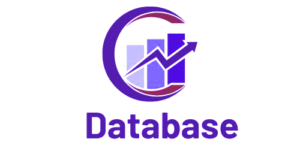usiness Database Solutions refer to the tools, systems, and strategies used by organizations to manage, store, analyze, and access data for various business needs. These solutions are essential for ensuring efficient operations, informed decision-making, and scalability in data management.
Here are key business database solutions that businesses typically use:

1. Relational Database Management Systems (RDBMS)
- What It Is: RDBMS are traditional systems that store data in structured tables with rows and columns. They ensure data integrity and enable complex queries.
- Examples:
- Microsoft SQL Server
- Oracle Database
- MySQL
- PostgreSQL
- Benefits:
- Structured data storage.
- Strong data consistency and integrity.
- Support for complex queries and reporting.
- Ideal for businesses that need to handle large amounts of structured data (e.g., financial records, sales transactions).
2. NoSQL Databases
- What It Is: NoSQL databases are designed to store unstructured, semi-structured, or large-scale data, such as documents, key-value pairs, or graphs. They offer flexibility and scalability.
- Examples:
- MongoDB (Document-based)
- Cassandra (Column-based)
- Redis (Key-value store)
- Neo4j (Graph database)
- Benefits:
- Scalability for handling massive amounts of unstructured data (e.g., social media posts, sensor data).
- High performance for fast reads and writes.
- Flexibility in terms of data structure and format.
- Best for modern applications, including big data, IoT, and real-time analytics.
3. Cloud-Based Database Solutions
- What It Is: These databases are hosted in the cloud, offering businesses scalability, flexibility, and lower upfront costs for infrastructure.
- Examples:
- Amazon RDS (Relational database as a service)
- Google Cloud SQL
- Microsoft Azure SQL Database
- MongoDB Atlas (Cloud-based NoSQL database)
- Benefits:
- Scalable on-demand storage and computing power.
- Lower upfront costs and reduced maintenance (no need for physical hardware).
- High availability and disaster recovery capabilities.
- Easy to integrate with other cloud-based applications and services.
4. Data Warehouses
- What It Is: A data warehouse is a centralized repository used to store and analyze large volumes of historical and current data from different sources for reporting and analytics.
- Examples:
- Amazon Redshift
- Google BigQuery
- Snowflake
- Microsoft Azure Synapse Analytics
- Benefits:
- Optimized for analytics and business intelligence.
- Data from multiple sources (CRM, ERP, transactional databases) can be integrated into one system.
- Enables advanced data analysis, reporting, and decision-making.
- Supports the use of ETL (Extract, Transform, Load) processes to clean and prepare data.
5. Customer Relationship Management (CRM) Databases
- What It Is: CRM databases help businesses manage interactions with customers and prospects. These systems centralize customer information and provide tools for marketing, sales, and customer support teams.
- Examples:
- Salesforce
- HubSpot
- Zoho CRM
- Microsoft Dynamics 365
- Benefits:
- Better management of customer data for improved service and personalized marketing.
- Helps sales teams track leads and opportunities.
- Integration with email, social media, and other marketing tools for targeted campaigns.
- Enhanced customer support by providing a complete view of customer interactions.

